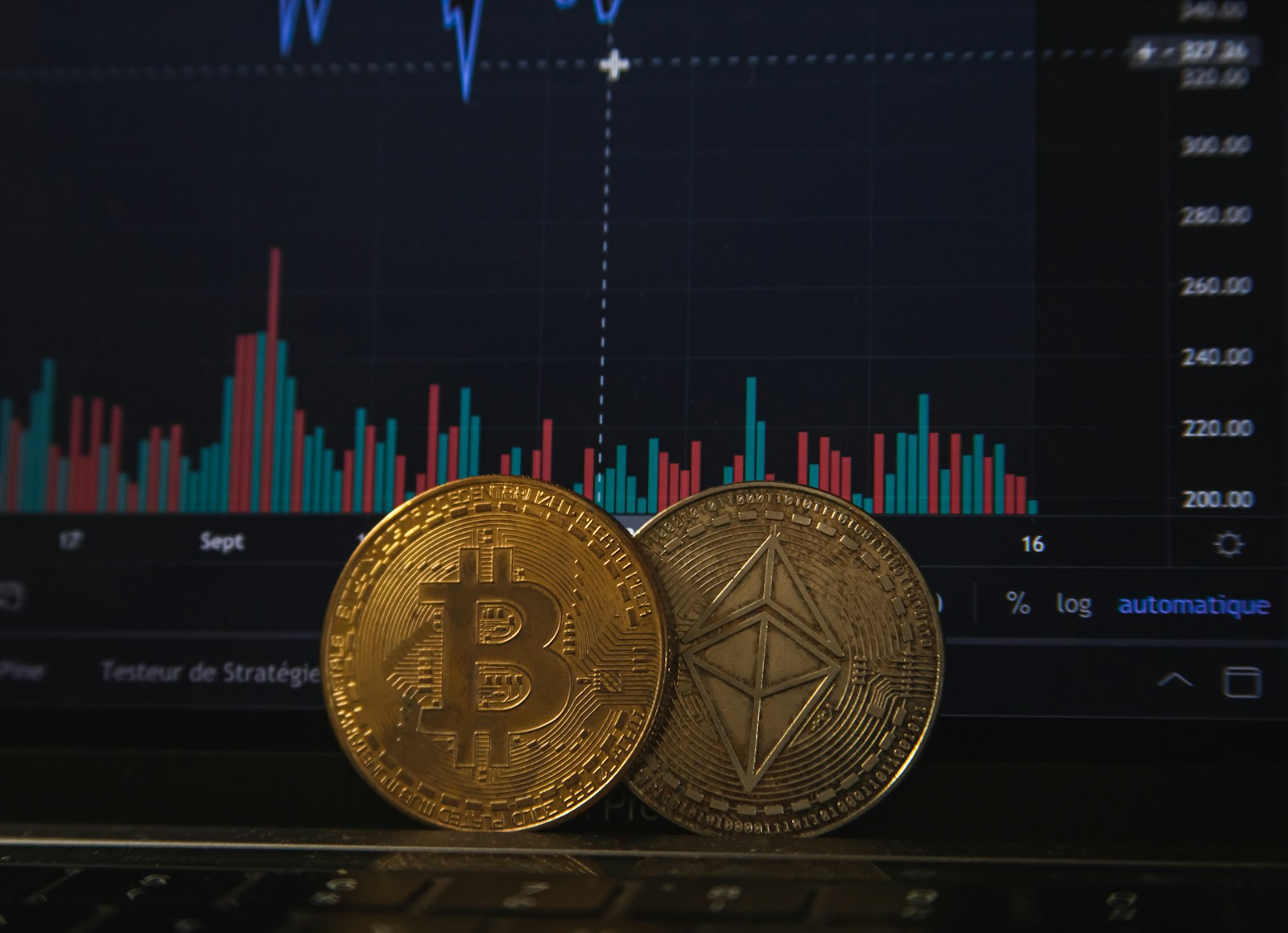
Fundamentals such as scarcity and network utility directly influence a token’s intrinsic worth. Bitcoin, for example, caps its supply at 21 million coins, creating a built-in scarcity that mimics precious metals. This limited availability combined with increasing demand elevates its perceived value. Conversely, cryptocurrencies with unlimited issuance often struggle to maintain price stability due to inflationary pressures.
The underlying technology also plays a crucial role in establishing trust and usability. Blockchain protocols offering faster transaction speeds, enhanced security features, or smart contract capabilities tend to attract broader adoption. Ethereum’s programmable blockchain introduced decentralized applications that expanded use cases well beyond simple transfers of value, thus enhancing network effect and boosting valuation metrics.
Speculation remains a significant factor in price volatility across digital assets. Traders react swiftly to news cycles, regulatory shifts, or market sentiment swings, sometimes decoupling prices from fundamental indicators. However, speculation alone cannot sustain long-term growth without real-world adoption driving consistent demand on the network.
The pace of adoption, measured by active addresses, merchant acceptance, or institutional investment, provides tangible evidence of utility translating into economic value. The entrance of large financial institutions into crypto custody services exemplifies how growing confidence impacts asset valuation beyond hype-driven spikes. As networks expand their user bases and integrate into existing financial systems, their tokens gain legitimacy and functional value.
In summary, combining scarcity with robust technology and genuine network adoption creates a synergy that underpins sustainable worth. While speculation injects short-term momentum, enduring appreciation depends on solid fundamentals reinforced by expanding ecosystem effects. Understanding these interconnected elements helps clarify why certain digital currencies command premium valuations today.
What Determines the Intrinsic Worth of Digital Assets: Crypto Fundamentals Basics
The primary driver behind any digital asset’s perceived worth lies in its fundamentals, which encompass technology, scarcity, utility, and adoption. Evaluating these factors provides a grounded framework for understanding market behavior beyond mere speculation. For instance, Bitcoin’s capped supply of 21 million coins introduces a clear element of scarcity, making it comparable to traditional scarce assets like gold. This finite supply directly influences its value by limiting inflationary pressures.
Beyond scarcity, the underlying technology determines how robust and scalable a network is. Ethereum’s transition to Proof-of-Stake (PoS) with the Merge significantly enhanced its energy efficiency and transaction throughput, improving network security and lowering fees. Such advancements increase the protocol’s utility, attracting developers and users alike–key indicators for sustained growth in both usage and price appreciation.
Technology as the Backbone of Value Creation
The technical architecture of a blockchain shapes its capacity to support decentralized applications (dApps), smart contracts, and token economies. Networks like Solana boast sub-second confirmation times and low transaction costs due to their unique consensus mechanisms, making them appealing for high-frequency trading platforms and gaming ecosystems. However, frequent outages in Solana highlight trade-offs between speed and reliability–an important consideration when assessing long-term value.
Adoption rates serve as a practical measure of a network’s real-world utility. Take Binance Smart Chain (BSC), which rapidly gained traction by offering lower fees compared to Ethereum while maintaining compatibility with EVM-based tools. This adoption surge increased BSC’s total value locked (TVL) from under $1 billion in early 2021 to over $15 billion within months, illustrating how user engagement can amplify an asset’s relevance and market capitalization.
Utility, often overlooked in speculative markets, directly impacts demand dynamics for tokens native to specific blockchains or protocols. Tokens that enable governance participation, staking rewards, or access to exclusive services inherently possess functional value that can sustain demand irrespective of market cycles. For example, Uniswap’s UNI token facilitates decentralized governance on one of the largest DeFi platforms; its utility underpins consistent activity despite volatile token prices.
The interplay between network effects and scarcity further refines valuation models. As more participants join a blockchain ecosystem–developers creating dApps, users transacting daily–the network gains positive feedback loops enhancing resilience and liquidity depth. Conversely, if token issuance exceeds demand growth or technological upgrades stagnate, downward pressure on valuation emerges swiftly. Thus, continuous innovation coupled with broad-based adoption remains critical for preserving intrinsic value in digital assets today.
How Scarcity Influences Value
Scarcity directly impacts the intrinsic value of digital assets by limiting supply relative to demand, creating a built-in deflationary pressure that can enhance price stability and appreciation over time. Bitcoin’s fixed supply cap of 21 million coins exemplifies this principle, where scarcity is embedded in its protocol, ensuring no more units can be minted beyond this threshold. This fundamental constraint creates a predictable supply curve, which contrasts sharply with traditional fiat currencies subject to inflation through unlimited issuance.
The effect of scarcity on market perception also intertwines with the fundamentals of asset utility and technological robustness. For instance, Ethereum does not have a fixed maximum supply but employs mechanisms like EIP-1559 that burn a portion of transaction fees, introducing a quasi-scarcity element that influences token value dynamics. Consequently, scarcity alone does not guarantee value; it must coexist with real-world utility, network security, and steady user adoption to sustain long-term demand.
The Role of Scarcity within Blockchain Technology and Network Effects
The underlying blockchain technology enforces scarcity through consensus algorithms and cryptographic rules that prevent arbitrary creation or duplication of tokens. In Proof-of-Work networks like Bitcoin, mining difficulty adjusts to maintain block intervals despite rising computational power, indirectly supporting scarcity by controlling issuance rates. Conversely, Proof-of-Stake systems rely on token locking mechanisms that reduce circulating supply temporarily, influencing short-term scarcity.
Network adoption amplifies the impact of scarcity by expanding transactional volume and enhancing liquidity across exchanges and decentralized platforms. The interplay between limited supply and growing demand from institutional investors or retail users often triggers positive feedback loops in valuation metrics. For example, Litecoin’s capped supply at 84 million coins combined with faster transaction confirmation times has fostered niche adoption as a medium for everyday transfers while maintaining scarcity-driven value support.
A comparative case study is Ripple (XRP), which initially released 100 billion tokens but holds a significant portion in escrow contracts to control circulating supply deliberately. This managed scarcity affects investor sentiment differently than fixed-supply models because perceived artificial constraints versus algorithmic limits shape expectations around future availability and price action. Thus, transparency regarding tokenomics critically influences how scarcity translates into market confidence.
Ultimately, assessing value through the lens of scarcity requires integrating quantitative data such as token emission schedules with qualitative factors including technological innovation and ecosystem growth trajectories. While finite supplies introduce inherent demand pressures under consistent adoption trends, emerging protocols experimenting with dynamic supply adjustments challenge traditional views on how scarcity drives valuation in distributed ledger environments.
Role of Network Security
Network security directly influences the intrinsic value of a blockchain-based asset by safeguarding its core fundamentals, such as transaction integrity and consensus reliability. A robust security model mitigates risks like double-spending, 51% attacks, and Sybil attacks, which otherwise undermine trust and deter adoption. For instance, Bitcoin’s proof-of-work mechanism expends considerable computational power to secure the network, creating a high entry barrier for malicious actors. This scarcity of attack vectors enhances the perceived utility and long-term viability of the system, positively affecting market confidence beyond mere speculation.
Adoption rates correlate strongly with the perceived resilience of a network against vulnerabilities. Networks that demonstrate consistent security performance tend to attract more participants–both users and developers–thereby increasing transactional volume and real-world use cases. Ethereum’s transition to proof-of-stake aims to improve security while reducing energy consumption, reflecting evolving priorities in network defense strategies. Such shifts impact value by aligning with user demand for sustainable yet secure infrastructure, reinforcing fundamentals over speculative hype.
The effect of network security extends into economic incentives embedded within blockchain protocols. Incentive mechanisms reward honest participation and penalize fraudulent behavior through cryptoeconomic models that rely on secure consensus algorithms. For example, delegated proof-of-stake systems incorporate slashing penalties to maintain validator honesty. This framework supports token scarcity by limiting inflationary issuance linked to secure operation rather than arbitrary distribution. Consequently, it contributes to stable valuation anchored in demonstrable utility rather than transient market sentiment.
Examining recent case studies reveals how breaches or weaknesses degrade asset value rapidly despite underlying utility. The 2016 DAO hack on Ethereum Classic led to prolonged skepticism due to compromised code-level security, stalling broader adoption for years afterward. Conversely, networks like Solana have faced downtime issues impacting user confidence but continue focusing on protocol upgrades targeting enhanced fault tolerance and attack resistance. These examples illustrate that sustained value accrues not only from initial design but from continuous reinforcement of network security aligned with evolving threat models.
Impact of User Adoption on Asset Valuation and Network Dynamics
User adoption directly influences the perceived value of digital assets by reinforcing scarcity through network effects and practical utility. As more participants engage with a blockchain’s underlying technology, the demand for limited tokens rises beyond speculative interest, aligning market prices closer to fundamentals such as transaction throughput, security guarantees, and protocol enhancements. For example, Ethereum’s transition to Proof of Stake significantly increased staking participation, reducing circulating supply and enhancing token scarcity–this shift propelled its valuation by improving both technological robustness and user commitment.
Conversely, low adoption rates often detach asset value from intrinsic utility, amplifying volatility driven primarily by speculation rather than sustainable growth. The interplay between adoption and utility is evident in decentralized finance (DeFi) platforms where active users determine liquidity depth, smart contract execution frequency, and governance engagement. Metrics like daily active addresses or total value locked (TVL) provide concrete indicators of this effect–Polygon’s surge in TVL from under $1 billion in early 2021 to over $8 billion in 2023 exemplifies how expanding user bases translate into tangible increases in network strength and asset credibility.
Future Implications and Strategic Recommendations
- Prioritize Protocol Scalability: Networks that reduce latency and gas fees will attract broader user bases, thereby enhancing utility-driven demand rather than pure speculation. Layer-2 solutions like Optimism showcase how technical upgrades can catalyze mass adoption while preserving scarce token supplies.
- Enhance Cross-Chain Interoperability: Expanding accessible use cases across ecosystems multiplies utility vectors, mitigating risks associated with isolated adoption spikes. Polkadot’s parachain auctions illustrate how connecting diverse chains creates compounded network effects benefiting all involved tokens.
- Monitor On-Chain Behavioral Analytics: Real-time tracking of wallet activity patterns enables precise differentiation between speculative inflows and genuine usage growth–a critical factor for accurate valuation modeling amid fluctuating market sentiment.
The synergy between robust technology foundations and growing user engagement forms the cornerstone of long-term value creation. Scarcity alone cannot sustain appreciation without meaningful utility driving consistent adoption; therefore, stakeholders must evaluate projects beyond headline price movements by scrutinizing underlying protocol health and ecosystem vitality. As regulatory clarity improves globally, transparent frameworks will further encourage institutional participation, deepening liquidity pools while stabilizing speculative excesses.
Ultimately, fostering a self-reinforcing cycle where increased adoption enhances protocol fundamentals–and vice versa–will determine which networks succeed in transitioning from experimental platforms into indispensable infrastructure components within the broader financial system. This dynamic highlights that intrinsic worth emerges not solely from fixed supply constraints but through continuous expansion of real-world applications powered by advancing blockchain technologies.








